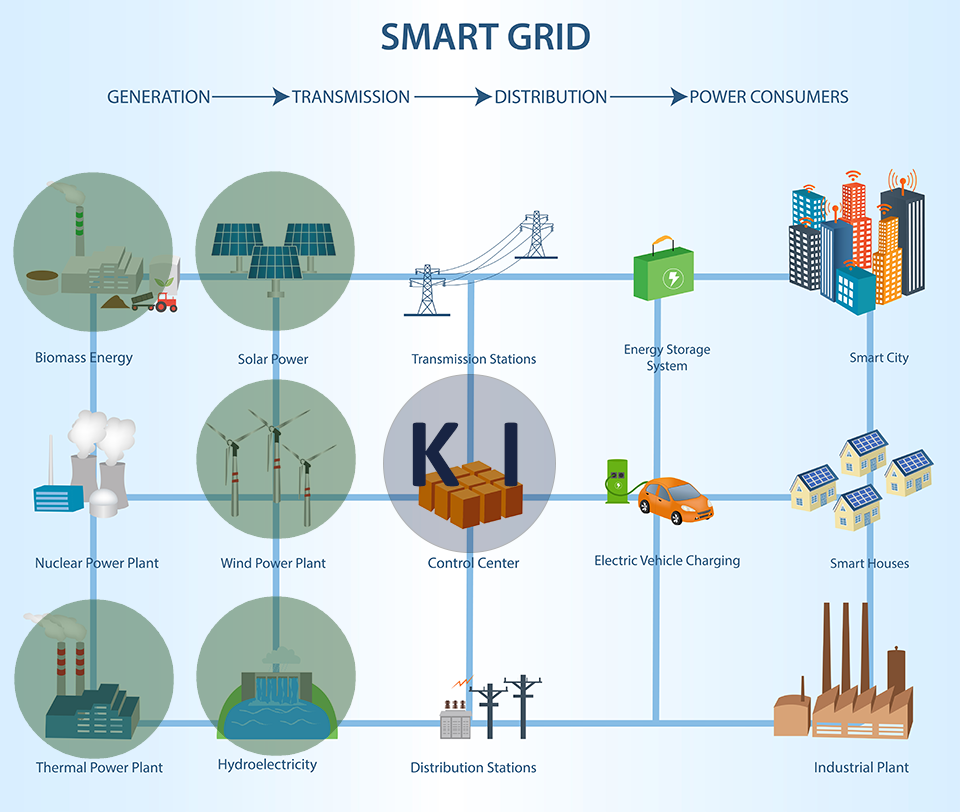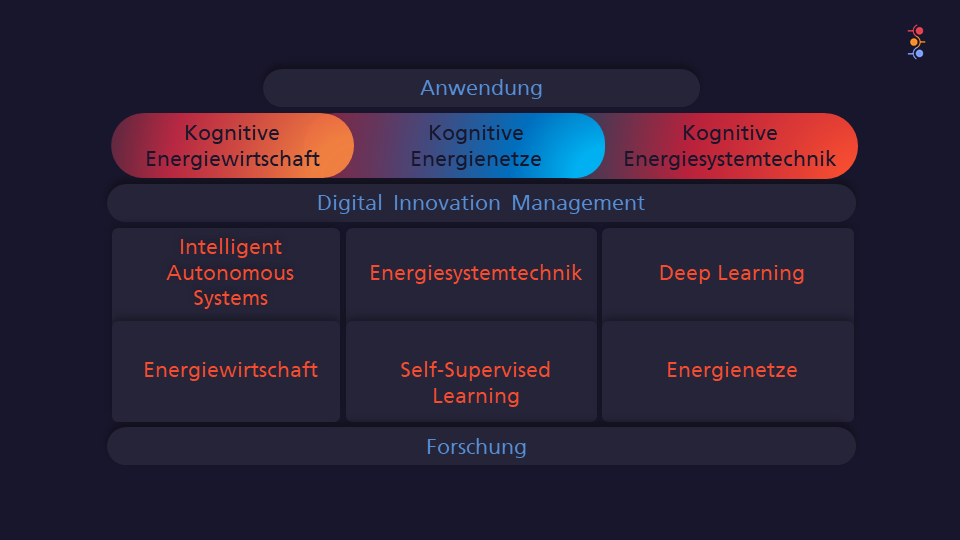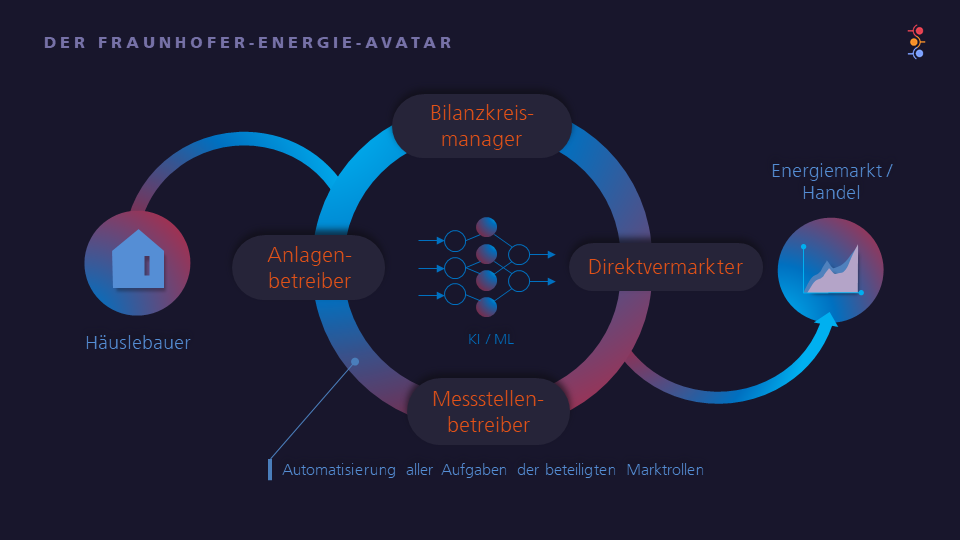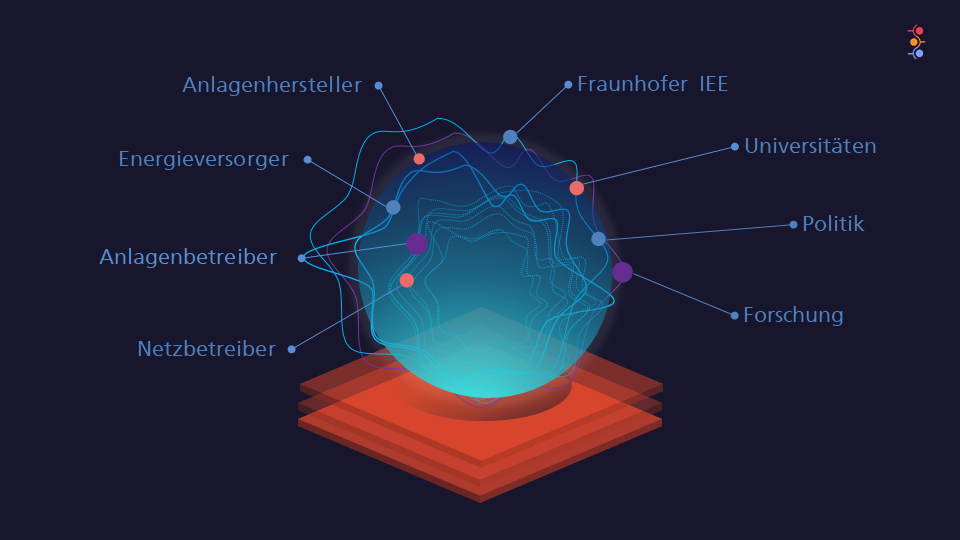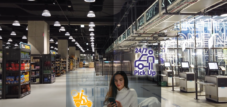Smart Grid: Artificial intelligence in the field of renewable energies
Language selection 📢
Published on: September 10, 2020 / update from: June 21, 2023 - Author: Konrad Wolfenstein
It was 33 years ago when I came into contact with the still young discipline “Artificial Intelligence” (AI). I dealt with the AI programming languages Lisp and Prolog. I also came into contact with the Internet via the university network. At the same time, the market for satellite television was booming. From here I continued to develop in the area of intralogistics until I still arrived in photovoltaics.
The FAW Ulm (Research Institute for Application-Oriented Knowledge Processing), the first independent institute for artificial intelligence, was founded in 1987. Companies such as DaimlerChrysler AG, Jenoptik AG, Hewlett-Packard GmbH, Robert Bosch GmbH and several others were involved. I was there as a research assistant from 1988 to 1990.
In the meantime, AI has found its way into many areas, be it medicine, law, marketing or computer games. The best known are machine translations, for example with Google Translate or Deepl. When analyzing and forecasting share price developments or handling the flood of information in search engines.
Artificial intelligence is a branch of computer science that deals with the automation of behavioral patterns, from which decision-making aids can be derived and, in the best case, independent, autonomous processes can continue. It is mostly used when an oversized or disordered but unmanageable amount of data needs to be managed and coordinated.
It is not always successful. For example, Amazon had to switch off its AI for evaluating applicants because the automatic evaluation system disadvantaged women .
And even with machine translations, there are often rough blocks in them that cause frowns or smiles when you take a closer look.
So it's not that easy with artificial intelligence. The problem is actually not the amount of data, but rather the correct allocation. Because Amazon had previously predominantly hired men, the AI concluded that there was a performance deficit among women. In fact, less attention has been paid to the fact that the low proportion of women in male-dominated professions has sociological reasons.
The fundamental problem of artificial intelligence: The programming of the algorithms and the initial data are only as good as the subjective work of the developers themselves who develop and make it available. Deficits in objectivity due to individual emotions and intentions, as well as errors in interpretation and perception by the developers, are taken over by the AI, it learns with them and expands on them. If you then add a lack of knowledge about the connections between things and processes (key qualifications), the circle closes.
More about this: Artificial intelligence made simple
The AI therefore needs a lot of development time and the courage to take setbacks before it can develop into an efficient system.
Headlines such as “Artificial Intelligence (AI) as the driver of the energy transition” or “How the logistics benefit from artificial intelligence” are medial alleys, which do not have to be reproduced in the beginning, which must be operated for development and effort and that the costs are initially visible before the financial profitability becomes visible.
Artificial intelligence has so far been used in the energy industry primarily for monitoring or forecasting tasks.
Smart Grid – Intelligent electricity
However, as the share of electricity from renewable energies increases, it becomes clear that AI will also control the energy system's processes on a large scale in the future.

Artificial Intelligence (AI) / Artificial Intelligence (AI) – Smart Grid – Intelligent Power Network – @shutterstock | monicaodo
While power grids with central power generation have dominated so far, the trend is towards decentralized generation systems. This applies to production from renewable sources such as photovoltaic systems, solar thermal power plants, wind turbines and biogas plants. This leads to a much more complex structure, primarily in the area of load control, voltage maintenance in the distribution network and maintaining network stability. In contrast to medium-sized to larger power plants, smaller, decentralized generation systems also feed directly into the lower voltage levels such as the low-voltage network or the medium-voltage network.
Building a smart power grid
An intelligent power grid integrates all actors into an overall system through the interaction of generation, storage, network management and consumption. Power plants (including storage) are already controlled in such a way that the same amount of electrical energy is always produced as is consumed. Intelligent power grids include consumers as well as decentralized small energy suppliers and storage devices in this control, so that, on the one hand, consumption is balanced in time and space (smart power/intelligent power consumption) and, on the other hand, non-disposable generation systems (e.g. wind energy and PV Systems) and consumers (e.g. lighting) can be better integrated.
Due to the larger share of renewable energies, it is becoming more important to align the fluctuations in energy production with the fluctuations in energy consumption. In addition to the possibility of storing electrical energy using energy storage or storage power plants, demand-based electricity generation, e.g. B. through hydroelectric power plants or bioenergy, the expansion of power grids for rapid distribution over a large area, there is also the possibility of adapting power consumption to the power supply.
“Power generation from solar and wind turbines makes the supply system much more small and weather-dependent than the operation of conventional power plants. In addition, the consumption must be more likely to be based on the range. The necessary flexibility cannot yet be mastered with the previous infrastructure. A decentralized system can only work through digital processes in real time and automated decisions, ”explains Prof. Dr. Clemens Hoffmann, head of Fraunhofer IEE. Hoffmann sees the basis for the next steps in the energy transition in digitization: “The coordination and decision-making processes of a decentralized renewable energy supply are extremely complex. It is only through artificial intelligence that it becomes possible to combine different systems such as electricity and heat supply as well as mobility via automated decisions on a large scale. With the establishment of an ecosystem for cognitive energy systems, we advance the applications of AI in the energy sector. ”
A decentralized energy system needs AI
There is already a concrete need for AI in various areas of the energy industry. Automatic energy trading is about systems that independently identify trading strategies and trigger purchases or sales. Photovoltaic and wind turbines as well as charging stations and electrolyzers can use AI to optimize their operations and thereby avoid maintenance and increase their service life. In the network sector, the technology is used to evaluate a variety of information, to recognize critical situations and to support their solution.
Fraunhofer IEE has been working on artificial intelligence to predict weather-dependent electricity generation from solar, wind and bioenergy for 15 years. An automatic trading system for the EPEX Spot electricity exchange is also being developed in Kassel.
Research for AI in the energy industry
"Artificial intelligence is a key technology for the further development of the energy transition: the departure from the centrally organized and based on fossil fuels to an energy system to an energy system based on renewable sources is a very complex process that can only be mastered by intelligent control," says Hessen Minister of Science Angela Dorn. “The competence center for cognitive energy systems gives scientists space for new ideas and research approaches to innovations in the energy industry. I am pleased that we support the structure. Now it depends on combining the expertise of researchers with strong partners from the economy. ”
Therefore, a new competence center for cognitive energy systems is being built in Kassel. The research project on artificial intelligence in the energy system is looking for partners from science and business and sees good conditions for Germany as a business and research location to achieve global innovation leadership in this topic. That is why the state of Hesse is supporting the development of the new competence center supported by the Fraunhofer Institute for Energy Economics and Energy System Technology IEE.
The new Cognitive Energy Systems Competence Center in Kassel is researching these areas of application of AI, the development of which is being funded by the Hessian state government with a total of 5.8 million euros between 2020 and 2022.
The K-ES
The Cognitive Energy System Competence Center (K-ES) has been set up by Fraunhofer IEE since mid-2020 to research the topics of cognitive energy economics, cognitive energy networks and cognitive energy system technology. The development process takes place over ten years. The K-ES is intended to become a national and international center for artificial intelligence in research and teaching.
The Competence Center for Cognitive Energy Systems (K-ES) looks at the tasks in the energy system from AI perspective and further develops them in the three areas of cognitive energy industry, cognitive energy networks and cognitive energy system technology. “A cognitive energy system independently determines its condition based on available information and learns to achieve specified goals. Artificial intelligence does not face human intelligence, but with it in a constant exchange and supports it. With the further development of the technology, both sides will change, ”explains IEE project manager André Baier.
The energy industry can also build on findings from other sectors. AI is already sustainably changing the automotive industry, retail, insurance and finance sectors. For the energy transition with renewable energies and sector coupling, the most important areas of digitalization are intelligent producers and consumers, virtual power plants, smart grid technologies and the real-time energy economy.
Concepts and applications for business
The concept for the structure of the K-ES was developed by Fraunhofer IEE. The initiative is based on an agreement in the Hessian state government's coalition agreement. Now the construction phase has begun. The primary aim is to create an ecosystem for innovations and form a community of experts. The new competence center will be part of the Fraunhofer IEE campus in Kassel, which is currently under construction, and will complement the research spectrum for the transformation of energy systems.
In the first step, premises and the IT infrastructure are set up with a cloud system. A digital platform is then created, through which partners from business and research can exchange ideas. The focus of the starting phase is on the recruitment of scientists and the establishment of skills. "Our concern is to combine scientists who have a common goal in mind, regardless of where the world the world is at home," said Baier.
Until the planned official foundation of the competence center, the focus is also on the acquisition of partners and application projects from the economy. Because a close connection with the energy industry is part of the concept: The services of the K-E-for energy companies include advice and concept studies, prototypes and turnkey systems. "We look forward to applications from researchers and companies alike, because such an ecosystem lives from the networking between theory and practice," emphasizes Hoffmann.
The goal: A community of international reputation in Germany
Over the next ten years, it is planned that around 100 experts at K-ES will work on the disciplines of data science, advances in machine learning, recommender systems and digital innovation management. There are currently 15 employees at Fraunhofer IEE working in these subject areas. The aim of the new facility is to become one of the leading communities for AI in the energy industry in Germany.
In order to take into account the high internationality of AI research, the competence center also offers guest scientists from all over the world the opportunity to participate. "Due to the special training infrastructure, corresponding hardware and software as well as a comprehensive model and database, we can operate EIC research for the energy system efficiently and across location," explains the scientific director of the K-ES, Christoph Scholz, the existing possibilities.
The development of AI is intensively working worldwide. So far, Germany has issued significantly less for a corresponding research than the competitors USA and China. In the course of the Federal Government's Corona future package, 5 billion euros are to be invested in AI by 2025. “At AI in the energy system, Germany, as a location for business and research, has good conditions to achieve global innovation leadership. It is important for all stakeholders to advance the topic together, ”said Hoffmann.
Cognitive systems
A cognitive system is a digital system with interfaces between the digital world and the environment that can perceive and understand things, as well as draw conclusions and learn from them. Cognitive systems are able to independently develop solutions for human tasks. They can interact and cooperate with other digital systems, interpret contexts and are adaptable.
Cognitive systems are being used in an increasing number of areas and represent, for example, the fundamental technology for self-driving vehicles, intelligent personal assistants, Industry 4.0 and the Internet of Things. A typical characteristic of such systems is that they can process large amounts of data in a short time and in embedded in a higher-level system (system of systems). Tens of billions of euros were invested in this technology worldwide by 2020.
A cognitive system can independently determine its own state and that of its assets based on available information and, through the ability to adapt, learn to achieve specified goals independently. Cognitive energy systems are a key technology for the energy transition. Applications in the electricity industry can be found in the area of network management and the management of generation and consumption.
Within the ecosystem for cognitive energy systems, access to AI is made easier for the various market roles. The tasks of system and measuring point operators, balancing group managers and direct marketers are automated to such an extent that they run independently. The “Energy Avatar” model (see above) illustrates how easily a “home builder” can participate in the energy market with his solar system if all processes are automated. The energy avatar is currently being developed in collaboration between the Fraunhofer Institutes IEE and IOSB-AST.
A close connection with the energy industry is part of the concept: K-ES's services for energy companies include consulting and concept studies through prototypes to turnkey systems. The ecosystem thrives on the networking between theory and practice.
Automation and autonomization. Read more about this here: “ CO2 Neutrality – Learn from Amazon ”
► Contact me or discuss with me on LinkedIn
What will be crucial for the future will be how we secure the infrastructure of our key industries!
Three areas are of particular importance here:
- Digital Intelligence (Digital Transformation, Internet Access, Industry 4.0 and Internet of Things)
- Autonomous power supply (CO2 neutrality, planning security, safety for the environment)
- Intralogistics/logistics (full automation, mobility of goods and people)
Xpert.Digital delivers you here from the Smart AUDA series
- Autonomization of energy supply
- urbanization
- Digital transformation
- Automation of processes
always new information that is updated regularly.



